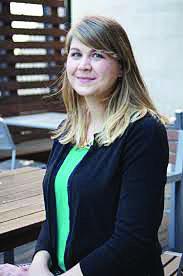January 14, 2021

Sydney Chaffee: Many questions to decide
Just after sunrise last Thursday, the four high school humanities teachers at Codman Academy in Dorchester logged into Zoom. They were developing a game plan for how to guide high school students through a conversation about the Jan. 6 riot in Washington, D.C.
Even in this virtual space, the energy was high and the mood was urgent. They were trying to work through many questions. What words should they use to describe the people who entered the Capitol? Is it okay to show the picture of the man holding the Confederate flag as he walked inside the Capitol? Does it do more harm to show them this violent image of this flag in class? Do they need to see that image to understand this event?
The group decided not to use the image of the Confederate flag. They also decided they would all spend the whole class period on the subject. “This was something I knew we’d need to take some time with,” said Sydney Chaffee, one of the humanities teachers on the call.
When Chaffee’s students logged into class at 10:45 a.m., they had widely varied information. Some had no idea there had been a riot at the Capitol building. Others had spent hours watching newsfeeds.
That’s a big reason why Chaffee began her class with some context: What was supposed to happen yesterday? What role did those lawmakers play in the peaceful transition of power?
She also wanted to give her students time to reflect. So, she showed the class, who are predominantly students of color, some pictures: lawmakers ducking for cover and Vice President Mike Pence resuming the electoral vote count late Wednesday night. She also showed the kids some photos of armed law enforcement officers clashing with protesters in the Capitol building and outside by the barricades.
It didn’t take long for her students to bring up race.
“I asked them, ‘What do you notice in the picture?’ And they said, ‘Well, I noticed that the police are not treating them the same way that they treated Black Lives Matter protesters,’” said Chaffee. “’If these people had been Black, they would not have gotten in.’”
Her students were actively engaged through the whole class. Within a few minutes, they were readily volunteering to share their feelings, Chaffee recalled, adding that even students who are typically shy in class took the chance to speak.
“One girl came off of mute, which she doesn’t do very often, and said, ‘This shows white supremacy because they wouldn’t have been treated that way if they were Black,’” recalled Chaffee.
Even though the students were remote, Chaffee said the virtual environment didn’t negatively impact the discussion for the most part. It was a productive hour, she said, but added, “it’s still difficult to read the kids’ emotions when you’re only seeing them as a two-inch square on a computer screen.”
This article was published on Jan. 7 by WBUR 90.9FM. The Reporter and WBUR share content through a media partnership.


